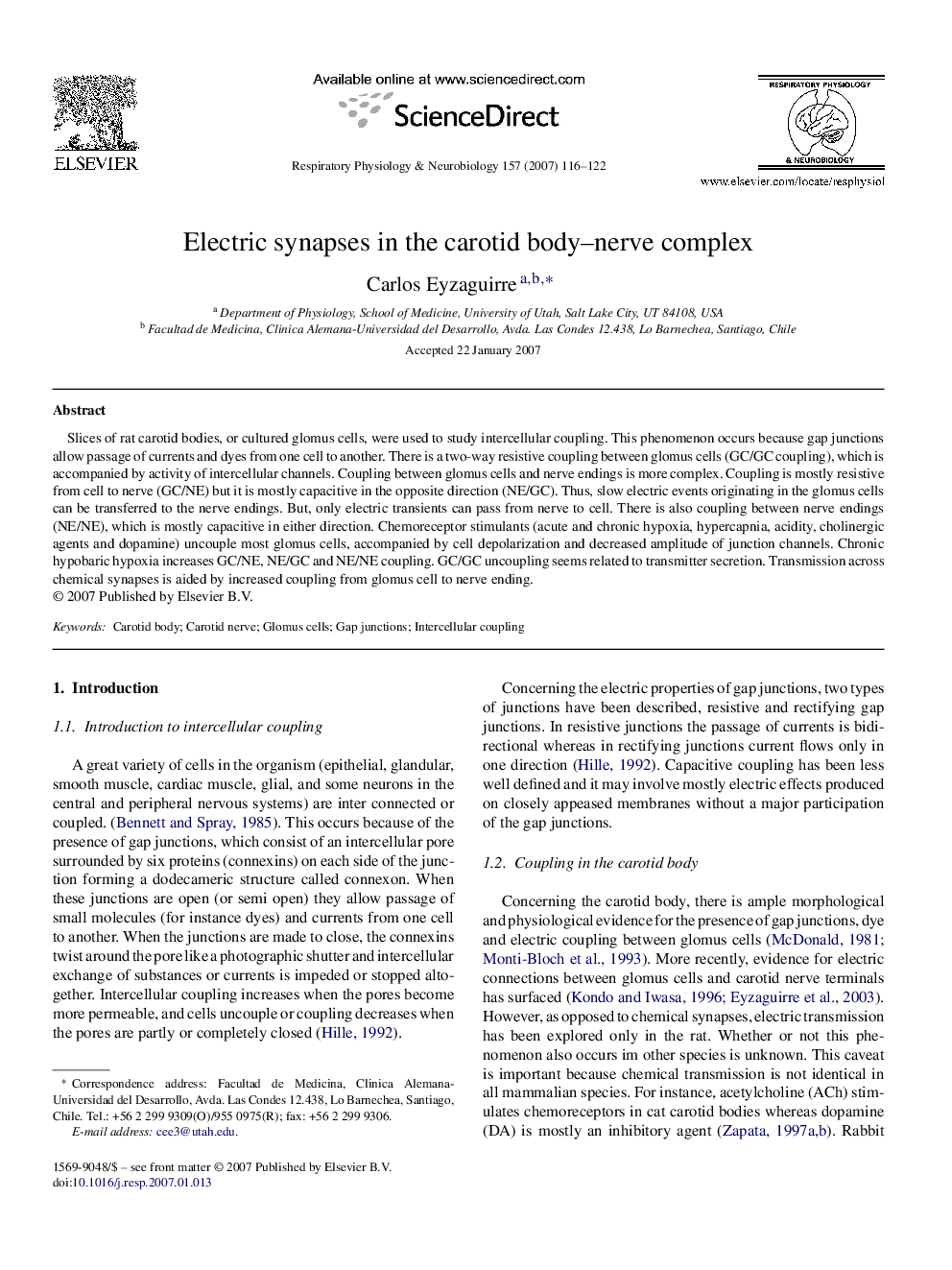| کد مقاله | کد نشریه | سال انتشار | مقاله انگلیسی | نسخه تمام متن |
|---|---|---|---|---|
| 2848475 | 1167424 | 2007 | 7 صفحه PDF | دانلود رایگان |
عنوان انگلیسی مقاله ISI
Electric synapses in the carotid body-nerve complex
دانلود مقاله + سفارش ترجمه
دانلود مقاله ISI انگلیسی
رایگان برای ایرانیان
کلمات کلیدی
موضوعات مرتبط
علوم زیستی و بیوفناوری
بیوشیمی، ژنتیک و زیست شناسی مولکولی
فیزیولوژی
پیش نمایش صفحه اول مقاله

چکیده انگلیسی
Slices of rat carotid bodies, or cultured glomus cells, were used to study intercellular coupling. This phenomenon occurs because gap junctions allow passage of currents and dyes from one cell to another. There is a two-way resistive coupling between glomus cells (GC/GC coupling), which is accompanied by activity of intercellular channels. Coupling between glomus cells and nerve endings is more complex. Coupling is mostly resistive from cell to nerve (GC/NE) but it is mostly capacitive in the opposite direction (NE/GC). Thus, slow electric events originating in the glomus cells can be transferred to the nerve endings. But, only electric transients can pass from nerve to cell. There is also coupling between nerve endings (NE/NE), which is mostly capacitive in either direction. Chemoreceptor stimulants (acute and chronic hypoxia, hypercapnia, acidity, cholinergic agents and dopamine) uncouple most glomus cells, accompanied by cell depolarization and decreased amplitude of junction channels. Chronic hypobaric hypoxia increases GC/NE, NE/GC and NE/NE coupling. GC/GC uncoupling seems related to transmitter secretion. Transmission across chemical synapses is aided by increased coupling from glomus cell to nerve ending.
ناشر
Database: Elsevier - ScienceDirect (ساینس دایرکت)
Journal: Respiratory Physiology & Neurobiology - Volume 157, Issue 1, 1 July 2007, Pages 116-122
Journal: Respiratory Physiology & Neurobiology - Volume 157, Issue 1, 1 July 2007, Pages 116-122
نویسندگان
Carlos Eyzaguirre,